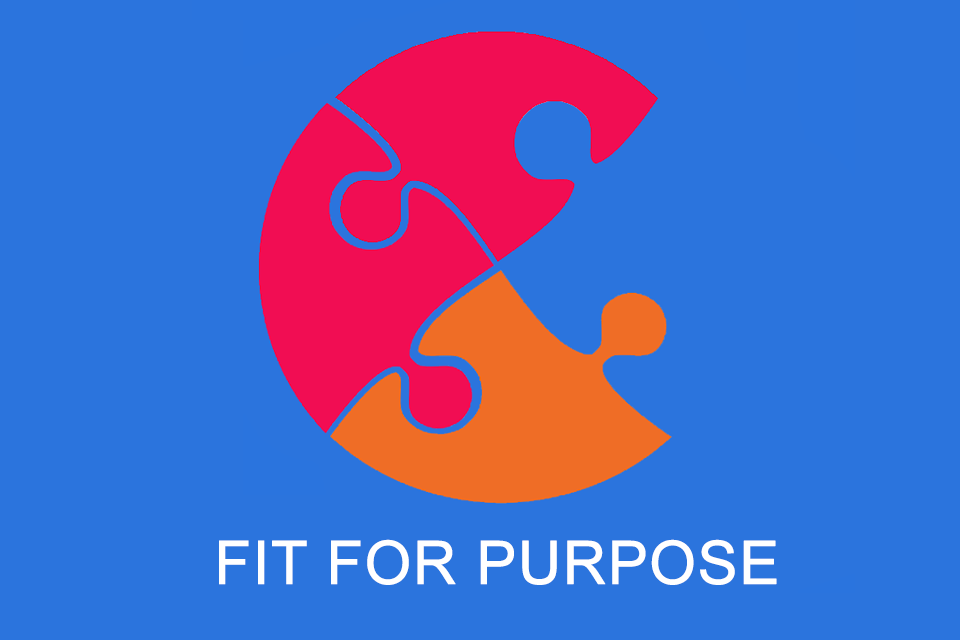What is Fit for Purpose?
Smartpedia: Fit for Purpose stands for “fulfils the intention” and describes a quality for products, services, processes or information that stakeholders at least expect.
Fit for Purpose – Fulfils the intention
Fit for Purpose is a term that describes a quality for products, services, processes or information that meet the expectations of the stakeholders – e.g. customers, users, clients, etc. It implies that quality is subjective and should therefore be defined, agreed and controlled between the acting parties prior to development, delivery, commissioning, etc.
In the course of development, specifications such as customer and requirements specifications form the corresponding basis. In agile project management or agile software development, concepts such as the Definition of Ready or the Definition of Done define expectations. Fit for Purpose is thus a kind of quality review.
The clearer the criteria to be checked are, the easier it is to determine the agreement or the deviation from it. In the company context, the quality check could take place, for example, at a milestone, when a hotfix is delivered or when alpha or beta software versions are made available.
Fit, More Fit and Most Fit for Purpose
A slightly modified interpretation of Fit for Purpose results from the semantics: “fulfills the intention” is not an enthusiasm, but in the truest sense of the word a practicality. It is not about a perfect solution, but about a solution that achieves a goal. You drive from A to B in a car, the car doesn’t have to be a convertible. An elevator brings you to the desired floor and this is easier than climbing stairs. In the sense of the Kano model, which describes the relationship between customer satisfaction and the fulfilment of customer requirements, this would be basic features and not performance features.
For companies, however, a fit-for-purpose approach enables the successive development of solutions, an idea that is essential when prototyping or working with minimal viable products. Theoretically, a categorisation with Fit for Purpose, More Fit for Purpose and Most Fit for Purpose could also be carried out, e.g. with regard to
- completeness,
- ease of use,
- the uniqueness,
- the continuity,
- the optics etc.
of a solution or a product.
Notes:
If you like the article or would like to discuss it, please feel free to share it in your network. And if you have any comments, please do not hesitate to send us a message.
Together with Alexei Zheglov, David J. Anderson, a well-known Kanban pioneer, has published the book Fit for Purpose. In the book, the two authors discuss how to recognise that a product change is an improvement, when improving a product is a step too far or when you are offering “too much” to a market. Very much worth reading.
Here you will find additional information from our Smartpedia section:



